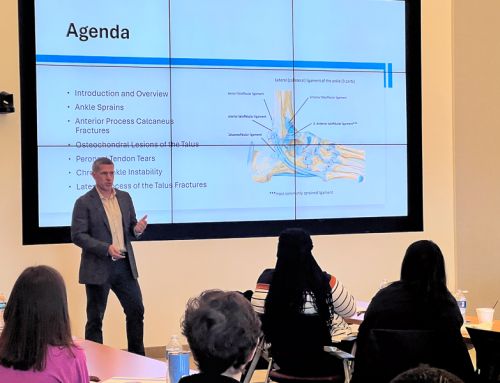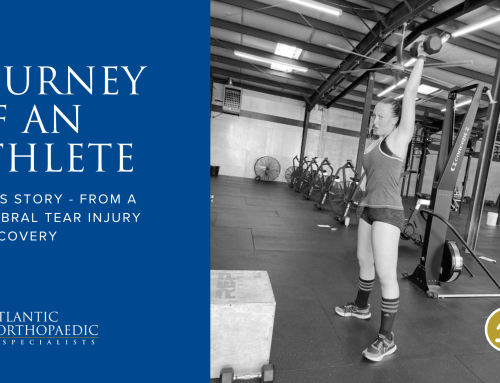Rapidly Rising Rate of Hip Fracture
Why is this happening and what can be done?

Jonathan Hull
When Atlantic Orthopaedic Specialists, Physician Assistant Jonathan Hull noticed increasing numbers of hip fracture admissions and readmissions at the hospital where he works, he took action to find out why and what could be done to reverse the trend. After more than a year of research, he had answers. Hull shared them with fellow medical professionals nationwide when his article, Hip Fracture Risk Assessment and Reduction, was published in the prestigious, national medical magazine, Journal of Bone and Joint Surgery.
Hull discovered that the rise in hip fracture rates and the associated risks of death and disability associated with those fractures were not limited to his hospital. They are part of a larger, global trend.
“The data shows that currently there are approximately 250,000 hip fractures annually in the U.S. and by the year 2050, the number is expected to reach 6 million,” Hull said. “With this increasing rate, mortality and morbidity associated with hip fractures will also grow.” He explained that this rise may impact overall health and stability of the health care system. “There is a growing need to assess and reduce hip fracture risks.”
Hull read more than 100 medical articles written and published in a variety of medical journals since 2005. Each article added to a more complete picture of hip fracture incidence, and associated morbidity and mortality rates. A few key facts stood out to Hull.
“Prompt treatment of hip fracture is essential to minimize risks,” said Hull. We strive to treat every acute hip fracture within 24 hours. However, an interdisciplinary medical team needs to be involved in the process very early, preferably in the emergency room.”
Hull explained that most hip fracture patients have other, non-orthopaedic medical conditions that can complicate their care. These include diabetes, malnutrition, and pulmonary, cardiac, or neurologic diseases. These co-morbidities greatly increase complications, readmission rates and consequent morbidity and mortality rates.
“The first step in reducing adverse events is to involve non-orthopaedic medical specialists for co-morbidities early in the patient’s care,” Hull said. “This will also result in a post-operative treatment plan that addresses these co-morbidities and reduces their negative impact on a patient’s recovery from hip fracture surgery.”
Hull believes that the combination of prompt treatment of acute hip fracture with an interdisciplinary medical approach, we can reduce the likelihood of post-operative morbidity and mortality. That means involving internists, orthopedic surgeons, respiratory therapists, dieticians, and a vigilant nursing staff.
About the author and About Atlantic Orthopaedic Specialists:
Jonathan Hull, MSPA, PA-C is a certified physician assistant with Atlantic Orthopaedic Specialists of Virginia Beach, Virginia. He sees patients at Sentara Leigh Hospital in Norfolk, Virginia where he also coordinates and expedites fracture care at the Fracture Center there for AOS and the hospital. Atlantic Orthopaedic Specialists is a physician owned practice with 23 orthopaedic surgeons, 6 Physician Assistants/Nurse Practitioners, and 20 Physical and Occupational Therapists. There are 6 office and physical therapy locations in Chesapeake, Virginia Beach and Norfolk, Virginia. Each clinical site has x-ray and casting capabilities. Atlantic Orthopaedic Specialists’ provide diagnosis, treatment and surgery for the orthopaedic injuries, deformities and arthritis in all areas of the body. AOS providers have specialty training in a wide array of subspecialty areas including spine, scoliosis, hands, shoulder, foot, ankle, hip, knee, pain management, and sports medicine.







